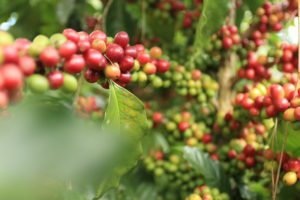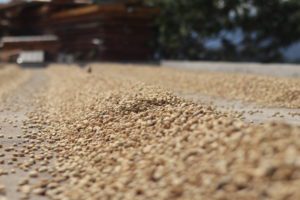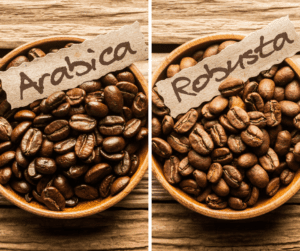Coffee is such a commonplace drink that we often don’t think about how powerful it is. A big cup provides a burst of energy. It brings people together, making them open up. Regular coffee drinking can even ward off depression. So the variety of forms of brewed coffee that can delight diverse preferences is like sunshine for most moods—sunshine in a mug, cup, glass bottle or can. So in the name of embracing variety (we’re always encouraging people to branch out to try single-origin Honduran coffee), we invite you to try new temperatures, forms and preparations for coffee.

Coffee Forms
Decades ago, coffee grounds were most often found in a boring tin can or jar. Nowadays, coffee comes in many forms and packaging. From ground coffee, to whole beans, to individual pods, to ready-to-serve or ready-to-doctor-up cold brews, there seems to be a coffee form for everyone. Iced lattes pep us up while infusing the will to push through a hot day. Meanwhile, the more common steamy varieties make the morning stagger toward the shower or closet easier in cold months.
Flavor Alterations
While some people brew the same black cup o’ joe 365 days per year, others revel in their individuality. From almond milk to creamer to delightful hazelnut flavoring, options abound. In the U.S., we’re at the point of saying “tis the season, pumpkin season!” in reference to the ubiquitous pumpkin spice latte. New pumpkin variations keep spawning.
Alternative Brewing Methods
There are super-interesting alternative methods of brewing coffee outside of the ubiquitous Keurig, other nice coffee machines and the classic Mr. Coffee for the simple crowd. The U.S. has always loved to mimic the coffee (and wine) habits of Europe. We’ll look at a coffee-brewing practice that originated there. Like the U.S., Australia experienced similar waves of coffee-loving Mediterranean immigrants, like Greeks and Italians. They brought their deep passion for coffee and spread it. Australia’s health-focused culture makes coffee ordering really. . .come alive with variety, especially in the breadth and specificity of milk and crème products used. It’s not unlike how some martini and mixed drink aficionados rattle off their preferences.
We fully understand that some people just want a standard cup of standard blend with little or no milk or crème. Others just want a shot of good espresso in the morning and to be done with it. Why not charge at the day espresso-fied and unencumbered by a thermos? Nevertheless, to continue this post, we celebrate the variety and creativity of coffee-preparing receptacles (containers and equipment).
History of the French Press
A timeless brewing method that many coffee lovers swear by is the French Press. It’s also called a cafetière. These “machines” are usually fancy and quaint all at once. The glass varieties that allow a view into the pressing process are endearing and fun.
The French press reputedly came about in a pinch in Paris in the nineteenth century. Prior to a Frenchman’s discovery of pushing down coffee grounds with a metal screen, people had simply boiled coffee. Then they waited for the grounds to settle. While on the road, the Frenchman decided to use a metal screen he had on hand. He found that his coffee tasted better this way, to his surprise. France and Italy have loved the French Press for a long time.

The Luxury of 21st Century Variation
Machine-Made Variation
There are several underrated aspects of coffee preparation methods and coffee culture today. One luxury is being able to adjust how you brew daily with modern at-home coffee equipment. Once upon a time, a French press was the only common option. Nowadays, there are affordable devices that do one action or several at once, like grinding, brewing and frothing milk. Of course, there are expensive at-home coffee machines that rival the local, primo coffee store’s equipment. Although, with the climbing price of coffee at the fanciest, hippest shops, it’s no wonder that some people find it worthwhile. Every member of a large family can enjoy coffee in their own way. And when company arrives, amateur barista skills can really shine.
Human-Controlled Brewing Variation: The Pour Over
A fun twist to coffee variation nowadays is the rising popularity of the pour-over. It’s not just fancy, multi-faceted machines that give coffee enthusiasts a complex cup of coffee to their liking. The art of the pour-over coffee method is in human control. This manual brew method uses low-tech equipment but concerns itself with even more factors than a machine controls under other coffee-brewing methods. Specifically, the variation takes the form of manipulating the water pour and timing to craft a tasty coffee.
Picking out the equipment for a pour-over can be fun! Pour-over containers tend to have a classic, earthy feel. They can also be sophisticated. It’s neat that either way, they tend to feel simple and appreciate the basic mechanics that can result in great coffee. Some setups even look like cute, funky or burly camping coffee equipment. The container into which the coffee may be poured may take the form of a:
- glass pitcher
- regular cup or mug
- carafe (a carafe is what sangria is poured into)
- thermos-style cup
- regular coffee pot
The factors the person may control before, during and after a pour-over are many. They include the water temperature, size of the grounds (coarseness), the weight of the coffee and the type of filter. Many people get deep into the science behind the size of the grounds, the gases released from the beans and the decomposition of the beans by hot water. It can be fun to vary the process and explore beans from many different countries and regions.
Variety Supported by Bean Quality
An excellent cup of coffee doesn’t just result from the combination of the machine, press or kettle and the barista’s skills. The quality of the bean matters immensely. At Subida Coffee Co., we know this truth. We committed to superior bean quality as soon as we decided to pursue our non-profit coffee dream.

Some people keep things simple—others express their individuality with a host of preparations. At Subida, we’ve been delighted by the process of supporting the variety that many coffee lovers and connoisseurs thrive on. Rich, delectable single-origin coffee from Honduras can arrive to your doorstep regularly. Honduras is a hotspot for producing exciting new beans and blends. Exploring the different ways these beans can be ground, brewed and enjoyed can entertain coffee lovers endlessly! Best of all, it's for a great cause—a non-profit supporting the education of youth in Honduras. Finally, here’s a look at all the shapes our gourmet single-origin coffee can arrive in:
- Whole Beans
- Ground Coffee
- Ready-to-Drink Coffees
- Single-Serve Pods
No matter your preference or the season, we’ve got you covered with gourmet coffee for a good cause.

